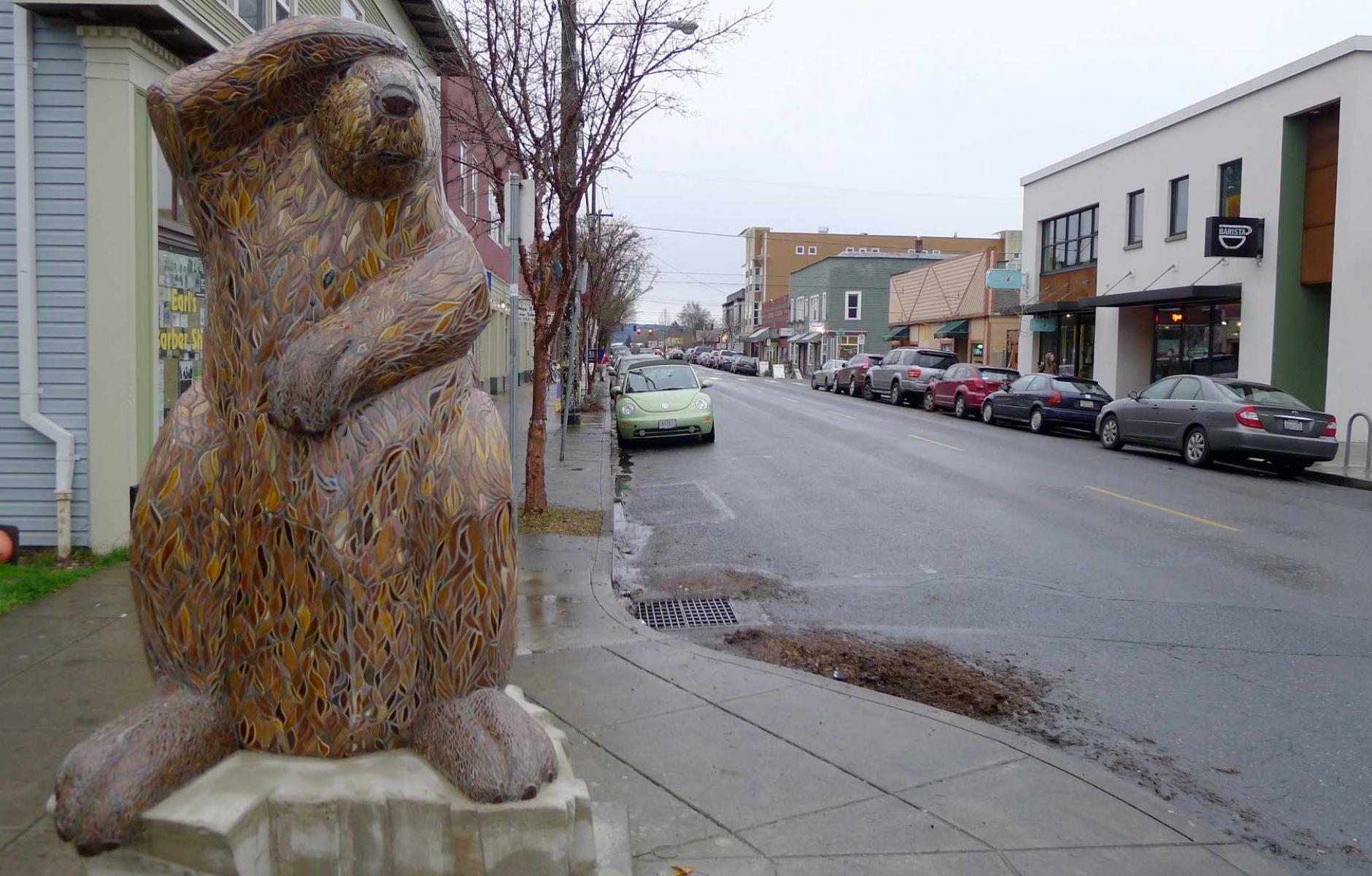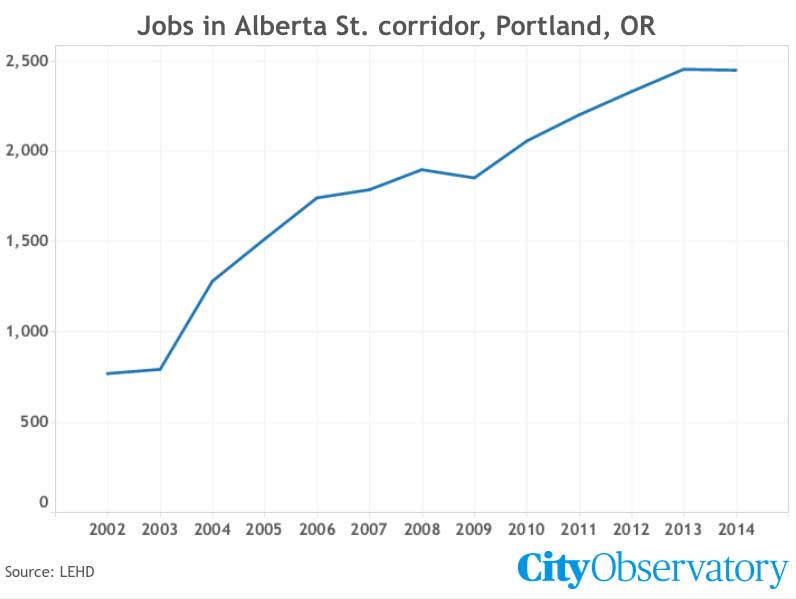
More storefronts, more jobs
Earlier this week, we introduced the Storefront Index, a measure of the location and clustering of customer-facing retail and service businesses. A primary use of the index is to identify places that have the concentration of retail activity that we generally associate with a vibrant neighborhood commercial area, and that can support a high level of walkability.
It’s also possible to construct the Storefront Index at different points in time to measure the growth or change in neighborhood commercial activity. For example, we presented data for Portland’s Alberta Street commercial neighborhood in 1997 and 2014. This neighborhood is situated in Northeast Portland, which has historically been home to some of the city’s lowest income households, and which has had a high share of the region’s African-American population.

The data show the substantial growth in storefront businesses over that time period.
As we noted in our report, storefronts are not important simply as commercial destinations or focal points for pedestrian activity. These retail and service businesses are an important source of jobs. To explore the connection between storefronts and jobs, we gathered data from the Census Bureau’s LEHD program for this same neighborhood. LEHD uses administrative records to provide very geographically detailed (block-by-block) estimates of the number of persons employed throughout the U.S. These data show a dramatic increase in local jobs over this time period. Firms on and near Alberta Street employed about 650 workers in 2002; by 2014 that had nearly tripled to 1,838. (We excluded the administration sector from these tabulations to exclude employment reported by local temporary help and employment leasing firms whose employees actually work outside the local neighborhood).

In the case of Alberta Street, the flourishing of the local storefront businesses has been associated with a significant increase in local employment—not just in retail and services businesses, but in a wide range of other sectors. Tracking the presence of storefronts over time can be an indicator not just of a neighborhood’s sidewalk vitality, but employment strength.




